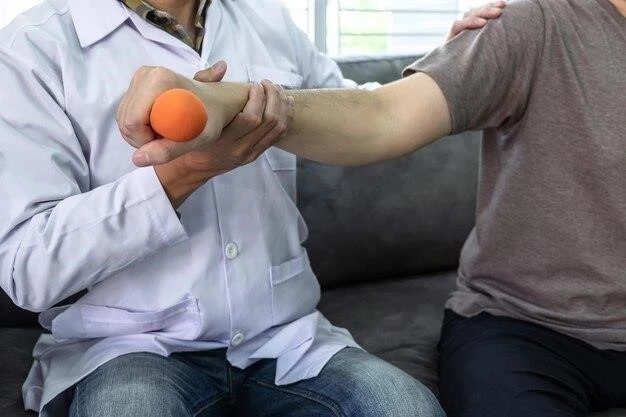Arthrogryposis Overview
Causes of Arthrogryposis Multiplex Congenita
Arthrogryposis Multiplex Congenita (AMC) is a condition with various causes, including genetic factors, environmental influences, or a combination of both․ Genetic mutations affecting muscle development or nerve function can lead to AMC․ In some cases, the cause remains unknown․
Distinct from other forms of arthrogryposis, X-Linked Arthrogryposis is inherited through a mutation on the X chromosome․ This genetic anomaly primarily affects males, as they have one X chromosome․ Symptoms may vary but commonly involve joint contractures and muscle weakness․
Treatment for arthrogryposis focuses on improving mobility, enhancing muscle strength, and preventing joint deformities․ Therapeutic interventions, such as physical therapy, orthopedic devices, and surgical procedures, aim to optimize the individual’s functional abilities and quality of life․
Symptoms of X-Linked Arthrogryposis
X-Linked Arthrogryposis presents a range of symptoms that typically include joint contractures, muscle weakness, and limited mobility․ Individuals with this condition may experience challenges with activities requiring fine motor skills or extensive range of motion․
Common symptoms also involve deformities in various joints, affecting the upper and lower extremities․ Depending on the severity of the condition, individuals may face difficulties in walking, grasping objects, and performing daily tasks independently․ Early diagnosis and intervention can help manage symptoms and improve overall functioning․
Treatment Options for Arthrogryposis
Arthrogryposis treatment aims to address the individual’s specific needs and improve functionality․ Treatment options include a multidisciplinary approach involving orthopedic interventions, physical therapy, occupational therapy, and assistive devices․
Orthopedic treatments may include corrective surgeries to release joint contractures, tendon transfers to improve muscle function, or the use of orthoses to support proper alignment․ Physical therapy focuses on strengthening muscles, enhancing range of motion, and promoting independent movement․
Occupational therapy assists individuals in developing skills for daily living activities and adapting to their physical challenges․ Assistive devices such as braces, splints, or mobility aids can also aid in mobility and promote independence․ A personalized treatment plan should be designed collaboratively with healthcare professionals to optimize the individual’s outcomes․
Diagnosis of Distal Arthrogryposis
Diagnosis of Distal Arthrogryposis involves a comprehensive evaluation by healthcare professionals, including a thorough medical history review, physical examination, and potentially genetic testing․ Clinical features of Distal Arthrogryposis may include contractures in the hands and feet, as well as muscle weakness․
Diagnostic imaging studies, such as X-rays or MRIs, can help assess the severity of joint contractures and identify any associated skeletal abnormalities․ Genetic testing may be recommended to confirm the presence of specific gene mutations associated with Distal Arthrogryposis subtypes․
Early and accurate diagnosis is crucial for developing an appropriate treatment plan tailored to the individual’s needs․ Healthcare providers may collaborate to ensure a comprehensive approach to managing the condition and optimizing the individual’s quality of life․
Management of Arthrogryposis Multiplex Congenita
Effective management of Arthrogryposis Multiplex Congenita involves a multidisciplinary approach aimed at addressing the complex needs of individuals with this condition․ Treatment strategies may include orthopedic interventions, physical therapy, assistive devices, and psychosocial support․
Orthopedic treatments such as serial casting, tendon lengthening procedures, or joint releases may be utilized to improve joint mobility and prevent further contractures․ Physical therapy plays a crucial role in strengthening muscles, enhancing flexibility, and facilitating functional movements․
Assistive devices like braces, splints, or wheelchairs can enhance mobility and promote independence․ Additionally, psychological support and counseling can help individuals and families cope with the challenges associated with Arthrogryposis Multiplex Congenita․
Genetic Counseling for X-Linked Arthrogryposis
Genetic counseling for X-Linked Arthrogryposis plays a crucial role in providing individuals and families with valuable information about the condition’s inheritance pattern, recurrence risks, and available testing options․ Genetic counselors work closely with healthcare professionals to offer personalized guidance and support․
During genetic counseling sessions, families can explore the underlying genetic factors contributing to X-Linked Arthrogryposis and discuss family planning considerations․ Genetic testing may be recommended to identify specific gene mutations and assist in making informed decisions about future pregnancies․

By enhancing understanding of the genetic aspects of X-Linked Arthrogryposis, genetic counseling empowers individuals to make informed choices regarding their health and family planning strategies․ It fosters informed decision-making and facilitates access to appropriate support services․
Physical Therapy for Arthrogryposis Patients
Physical therapy is a cornerstone in the management of arthrogryposis patients, focusing on enhancing mobility, strength, and functional abilities․ A tailored physical therapy program is essential to address the unique needs of individuals with arthrogryposis, aiming to maximize independence and quality of life․
Physical therapists use a variety of techniques such as stretching exercises, muscle strengthening, range-of-motion exercises, and functional training to help improve motor skills and optimize movement patterns․ Therapy sessions are customized based on the individual’s specific challenges and goals․
Through consistent and targeted physical therapy interventions, arthrogryposis patients can experience improvements in muscle function, joint flexibility, and overall physical well-being․ Collaborating with a skilled physical therapist can significantly enhance the individual’s functional outcomes and facilitate long-term mobility․
Research Advances in Arthrogryposis Treatment
Ongoing research into arthrogryposis treatment has yielded promising advancements, focusing on innovative therapies, genetic discoveries, and multidisciplinary approaches․ Scientists and healthcare professionals are exploring novel treatment modalities to enhance the quality of life for individuals affected by arthrogryposis․
Current research efforts are delving into gene editing technologies, regenerative medicine techniques, and precision therapies tailored to address the underlying genetic causes of arthrogryposis․ Collaborative studies involving geneticists, orthopedic surgeons, and rehabilitation specialists aim to improve treatment outcomes and develop targeted interventions․
By leveraging cutting-edge research findings and collaborative efforts, the field of arthrogryposis treatment continues to evolve, offering hope for enhanced therapeutic strategies and improved long-term outcomes for individuals living with this complex condition․
